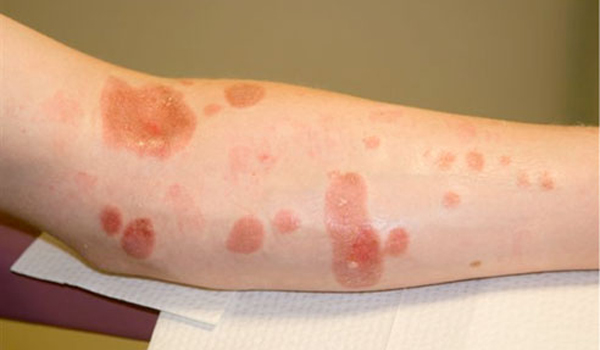How Do Chemicals Cause Burns?

The toxic red sludge that began flowing from an alumina plant in western Hungary on Oct. 4 has flooded three towns, killed four people and injured at least 120. The alumina spill has now spread to the Danube River, having already killed all fish in the smaller Marcal River, which was hit by the sludge first.
The thick, slightly radioactive sludge contains heavy metals that can burn through clothing and skin. It is toxic if ingested, and inhaling its dust could lead to lung cancer, according to Hungary's National Disaster Unit
Harmful substances that can cause chemical burns can also be found outside of the manufacturing processes, according to the Agency for Toxic Substances and Disease Registry. Many products that people use daily contain varying levels of chemicals that could lead to a burn if the people are not careful.
What's a chemical burn?
Chemical burns can occur when a person touches a harmful chemical, comes into contact with clothing or other objects that have touched the chemical, or inhales or swallows the chemical in contaminated food, water or medication, according to the New York State Department of Health.
Substances found in household products that commonly cause burns include hydrofluoric acid (used in commercial rust removers), sodium hydroxide (lye), ammonia, bleach and battery acid, said Marcel Casavant, medical director at the Central Ohio Poison Center, at Nationwide Children's Hospital in Columbus. Other causes of chemical burns include drain cleaners, and the salt used to melt winter snow from driveways, Casavant told Life's Little Mysteries.
Children are especially susceptible to chemical burns because their skin is more hydrated and less waxy than an adult's. Additionally, they have fewer protective layers of the dead skin that accumulate on the body as a person matures, Casavant said.
Sign up for the Live Science daily newsletter now
Get the world’s most fascinating discoveries delivered straight to your inbox.
Casavant recently treated a baby who had crawled through a small puddle of bleach as her mother cleaned the floor. The girl suffered chemical burns on the front of her legs.
While chemicals usually cause only first-degree burns, which affect the top layer of skin, chemicals left on the skin for longer times may cause second- or third-degree burns, Casavant said.
How to prevent burns
"The most important thing is to always keep chemicals in their original containers and to keep them locked up and out of the reach of children," Casavant advised. "When using the chemicals, such as for cleaning, pour out only the amount that you intend to use do not pour it into a different container and leave it off to the side and never leave the open chemicals unattended."
Symptoms of a chemical burn include abdominal pain, breathing difficulty, bright red or bluish skin and lips, headache, weakness, dizziness, seizures, unconsciousness, nausea, vomiting, hives, itching, rash, blisters, swelling and pain where the skin has come in contact with the toxic substance, according to the National Institutes of Health.
The following chemical-burn prevention tips are provided by the NIH:
- Avoid mixing different products that contain toxic chemicals, such as ammonia and bleach. The mixture can give off hazardous fumes.
- Avoid prolonged exposure even to low levels of chemicals.
- Avoid using potentially toxic substances in the kitchen or around food.
- Never store household products in food or drink containers. Leave them in their original containers with the labels intact.
- Safely store chemicals immediately after use.
- Do not use products that give off fumes including paints, petroleum products, ammonia and bleach except in well-ventilated areas.
If a chemical burn occurs, Casavant said, people should immediately call the U.S. poison control center hotline at 1-800-222-1222.
Got a question? Email it to Life's Little Mysteries and we'll try to answer it. Due to the volume of questions, we unfortunately can't reply individually, but we will publish answers to the most intriguing questions, so check back soon.










